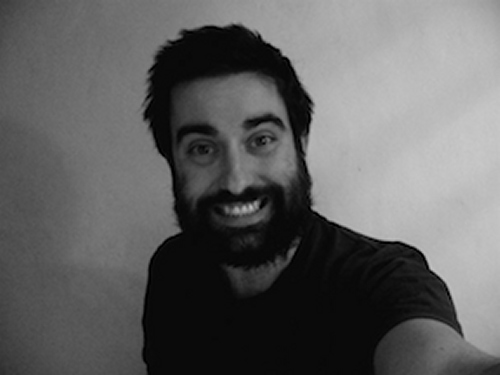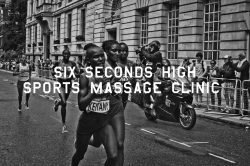Six Seconds High

Six Seconds High – Sports Massage Clinic.
I practice an individual form of sports massage that is devised from my training in Sports Massage, Therapeutic Massage, Deep Tissue Massage, Trigger Point Therapy, Soft Tissue Release and Muscle Energy Techniques. My practice centres around the emotional basis of muscular pain and dysfunction and I have a particular focus on the treatment of depressive disorders within athletes.
Whilst I strive to offer an excellent service within my clinic I also believe that a worthwhile practice must have a purpose to compliment its existence, not only the everyday purpose it was designed for, but beyond that, a clinic must improve the quality of the field it belongs to and the athletic community it works for. I therefore I work out of my studio flat in Teddington, so that I can keep my prices low and offer an unmatched range of concessionary prices for those normally excluded, but usually most in need of therapy.

53b Broad Street
Teddington
TW11 8QZ
(Private address)
Email: simon@sixsecondshigh.com
Web: www.sixsecondshigh.com
Twitter: @sixsecondshigh
Tel: 07971811820

Mon-Sat 8am-8pm.

Simon was interviewed recently by the website Outdoor Buzz about his work and approach to it – here is an except from the full article.
Clinic owner Simon Lamb is a long distance runner and a sports massage therapist with an interest in treating depression in athletes.
You’re an advocate of sports massage helping athletes mentally as well as physically – can you tell us why you believe so strongly in this?
The muscular and psychological patterns an athlete learns during their training can affect the rigidity and function of their muscles and other soft tissue. The perception of these behavioural patterns – negative thought patterns – brought about by injury – or direct overuse, continue to affect the musculature of the body even after the physical or psychological restrictions have healed. When the body is tense, the mind locks itself into that same set way of perceiving. When negative emotions and muscular problems overwhelm the athlete, they are likely to continue to tense a muscle or set of muscles to stem the flow of feeling. The problem the athlete faces is that a one-time muscular defence can lead to chronic tensions and depressive episodes that are then suppressed again and again.
The intricate relationship between an athlete’s psychological state and their physical performance is, I believe, the true cause of fatigue during sporting and endurance events. This distress directly manifests itself within the evolving musculature of the athlete’s body. Within my practice, I aim to not only act as an agent for consistent maintenance and rehabilitation of the athlete, but to also address these physical and psychological pain patterns. Through direct musculature work I attempt to unlock and release the psychological component that put the athlete’s body in that pattern to begin with.
You have a policy to make your services financially available to everyone – why is this so important to you?
Having suffered from life long mental health problems I have, at times, been desperately in need of services that I couldn’t afford privately and were not available to me via the NHS. I trained to solve this problem, firstly, to treat myself, after constantly getting turned away from other private service facilitators.
After finishing my training I chose not to become a private therapist who charges high prices, excluding most of the people who really need the service. I believe that a worthwhile clinic must have a purpose to compliment its existence; not only the everyday purpose it was designed for, but beyond that, a practice must improve the quality of the field it belongs to and the athletic community it works for. Good health care should be available to everyone; my concessionary prices are my attempt to address that. I also sponsor a running team who receive completely unrestricted healthcare whenever they need it.

Jim Denison wrote a book called “The Greatest – The Haile Gebrselassie Story” in it he describes a meeting between Haile and a group of American journalists who were questioning him about his business projects.
“An American screams out, “how big is your new building, Haile?”
“Well, I can tell you that exactly.” Haile says, “because you see I have measured it very carefully. It’s six seconds high.”
“Excuse me,” the American says, “six seconds high?”
“Yes, six seconds high. That’s how long it takes for a stone dropped from the top floor to reach the ground.”
And immediately the room goes silent as all the reporters scribble down that line … six seconds high – such an honest and earthly metaphor to portray the essence of Haile’s beginnings and everything he has done for his country.”
Modern medicine is highly sophisticated, there are a million ways to heal and fix a broken body, yet here was I about to embark on a new career featuring one of the most basic, oldest methods of healing. The way Haile described measuring his building, with such honest pride and belief in his method, when he was surrounded more accurate means, rang true to what I was about to initiate.
So I chose the name Six Seconds High, as a reminder to always keep things simple.

.


